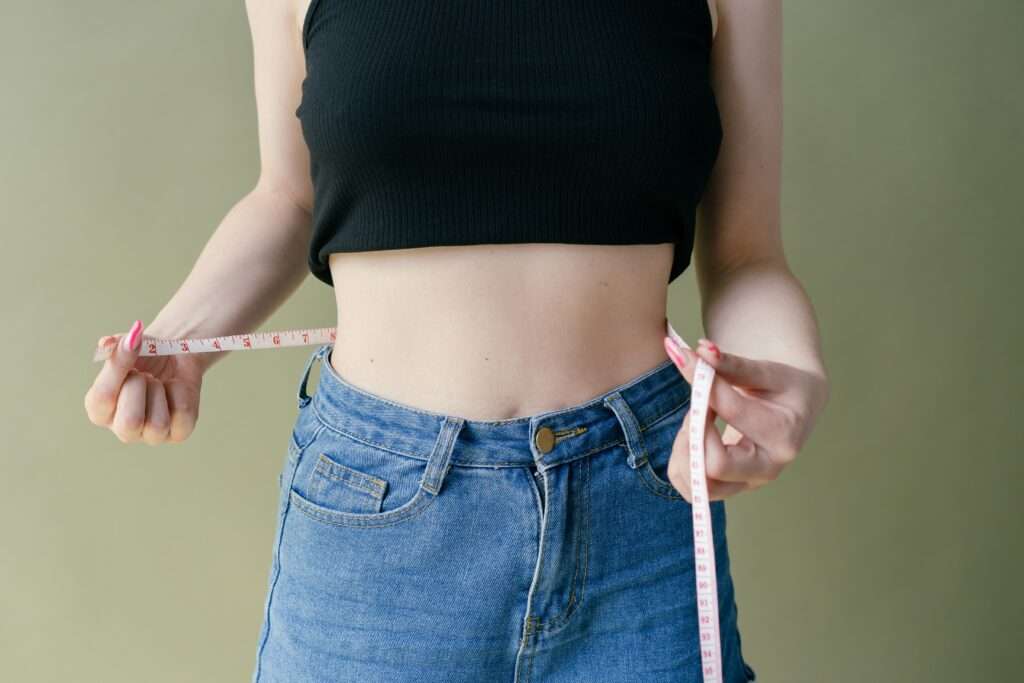To lose chest fat, also known as “man boobs,” is a common concern among men to lose chest fat. It is caused by various factors, including hormonal imbalances, being overweight or obese, genetics, and certain medications.
The appearance of chest fat can be a source of insecurity and frustration for many men, but the good news is that it is possible to reduce chest fat and achieve a leaner and more defined chest.
This article will explore the various methods and strategies to lose chest fat, including diet and exercise tips, lifestyle changes, and other helpful tips for achieving your goals.
Whether you want to eliminate stubborn chest fat or improve your overall physique, this guide will provide the information and tools to achieve your goals and feel more confident in your appearance.

1. Maintain a calorie deficit to lose chest fat:
Maintaining a calorie deficit is a crucial step to losing chest fat. A calorie deficit will happen when you consume fewer calories than your body burns. When you follow calorie deficit, your body burns stored fat, including chest fat, as an energy source.
To maintain a calorie deficit, you’ll need to track your daily calorie intake and ensure it is lower than your daily calorie expenditure. You can do this by keeping a food diary, using a calorie-tracking app, or consulting a dietitian. There are several ways to create a calorie deficit.
Reduce portion sizes: One of the simplest ways to reduce your calorie intake is to eat smaller portions. This can be done by using smaller plates, measuring your food, or eating more frequently throughout the day but in smaller amounts.
Cut out processed foods: Processed foods are often high in calories and low in nutritional value. You can reduce your calorie intake and improve your health by cutting out processed foods.
Increase your healthy intake of fruits, vegetables, and lean proteins: Fruits, vegetables, and lean proteins are nutrient-dense foods low in calories. Increasing your intake of these foods can reduce your calorie intake without feeling as hungry.
Avoid high-calorie drinks: Beverages like soda, juice, sweetened coffees, and teas can be high in calories. Try to limit or avoid these drinks and opt for water, unsweetened tea or coffee, or other low-calorie beverages.
2. Corporate cardio exercises:
Cardio exercises such as running, cycling, swimming, and rowing are great for burning calories and reducing overall body fat, including chest fat. Incorporating at least 30-40 minutes of cardio exercise, 3-5 times a week, into your workout routine will help you to achieve your goal.
High-Intensity Interval Training (HIIT) is another effective way to burn a lot of calories in a short amount of time. It’s important to be consistent and to vary the types of cardio exercise you do to achieve the best results.
2. Resistance training:
Resistance training, also known as strength training, is another effective way to lose chest fat. Adding muscle mass can increase your metabolism and burn more calories, even at rest. This will aid in the loss of chest fat and overall body fat. Incorporating resistance training exercises, such as push-ups, pull-ups, and chest presses, can help to tone and define the chest muscles.
3. Target the shoulders and back:
To make the chest appear leaner it’s also important to include exercises targeting the shoulders and back to make the chest appear leaner. These muscles will help pull the shoulders back and make the chest thinner.
4. Limit saturated fats:
Limiting saturated fats in your diet is essential for losing chest fat. Saturated fats are found in butter, cheese, red meat, and fried foods. These fats can contribute to weight gain and make it challenging to lose chest fat.
To limit your intake of saturated fats, you should focus on eating more lean proteins, fruits, vegetables, and whole grains. Also, you can opt for healthier fats such as olive oil, avocado, nuts, and seeds. Avoid processed, fried, and fast foods as much as possible.
Additionally, you can use cooking methods that only involve a little oil, such as baking, grilling, or steaming. Remember that a balanced diet with the right amount of macronutrients is key for weight loss and overall health.
5. Get adequate sleep:
Getting adequate sleep is essential for weight loss, including losing chest fat. Aim for at least 7-8 hours of sleep per night. Poor sleep can lead to weight gain and make it harder to lose chest fat. Additionally, sleep helps recover muscles and balance hormones, which are essential for weight loss.
6. Manage stress:
Managing stress is essential for weight loss, including chest fat. Stress can contribute to weight gain and make it challenging to lose chest fat. Finding ways to manage stress, such as yoga, meditation, or therapy, can help promote weight loss and overall health.
7. Quit smoking:
Quitting smoking can help promote weight loss, including chest fat. Smoking can contribute to weight gain and make it challenging to lose chest fat. Additionally, quitting smoking can improve overall health and has many benefits.
8. Consult a doctor:
In some cases, chest fat may be caused by a medical condition, such as an imbalance of hormones or a thyroid disorder. It’s essential to consult a doctor to rule out any underlying medical conditions contributing to chest fat.
9. Be consistent and patient:
Losing chest fat takes time and effort. It’s essential to be consistent with your diet and exercise routine and patient with the process. Remember that it’s not a sprint. It’s a marathon.
In conclusion, losing chest fat is possible with the right approach by maintaining a calorie deficit and incorporating cardio and resistance training exercises.
By targeting the shoulders and back, limiting saturated fats, getting adequate sleep, managing stress, quitting smoking, consulting a doctor, and being consistent and patient, you can reduce chest fat and achieve a leaner and more defined chest. Before starting any new exercise or nutrition program, remember to check with your doctor.




I’m so in love with this. You did a great job!!